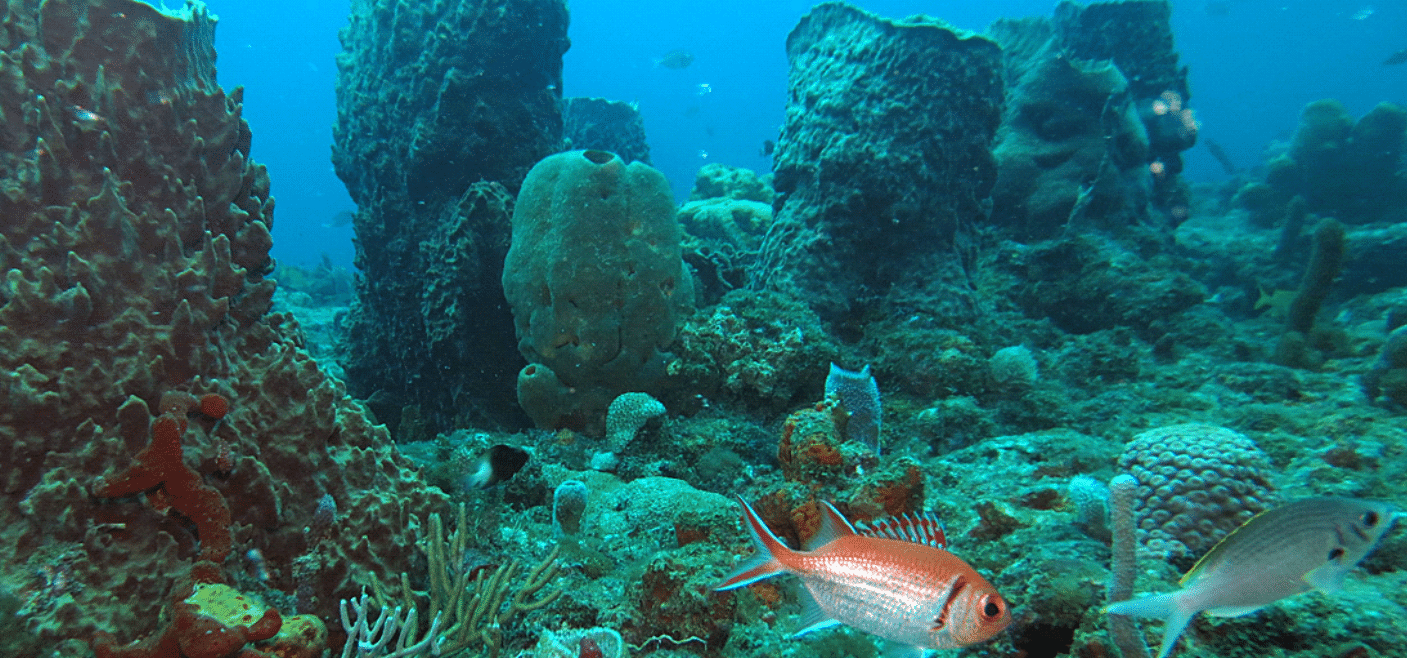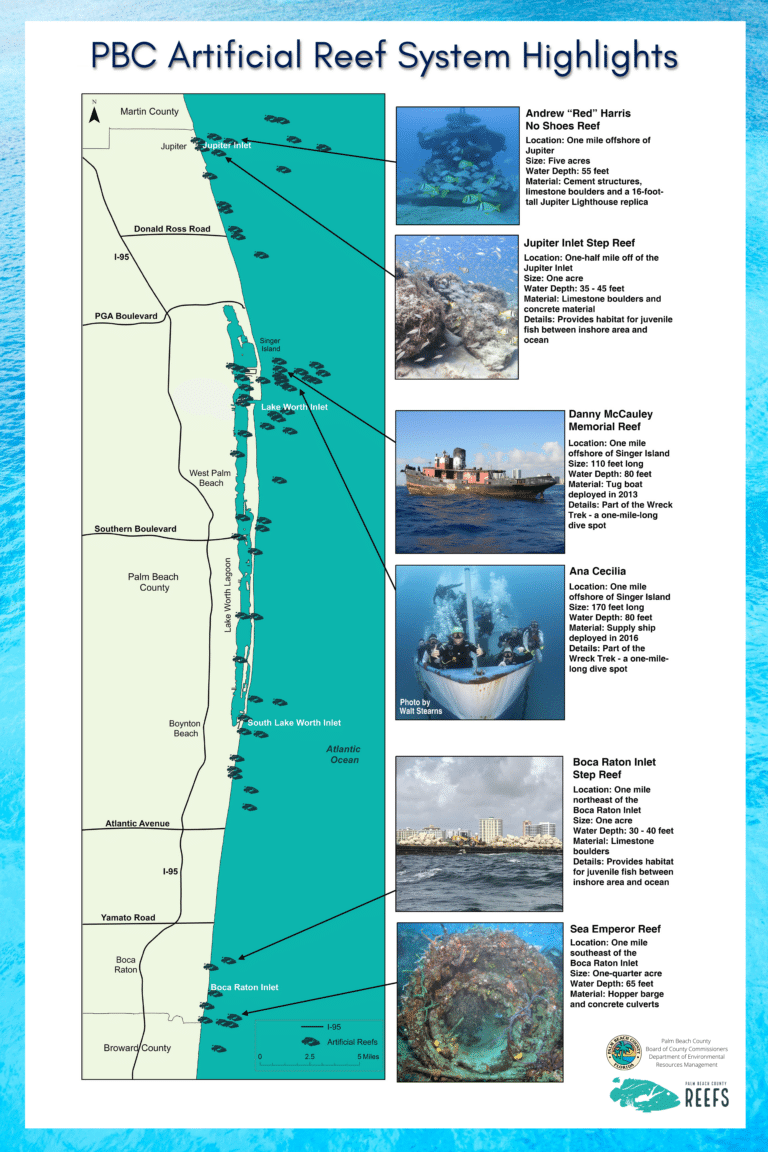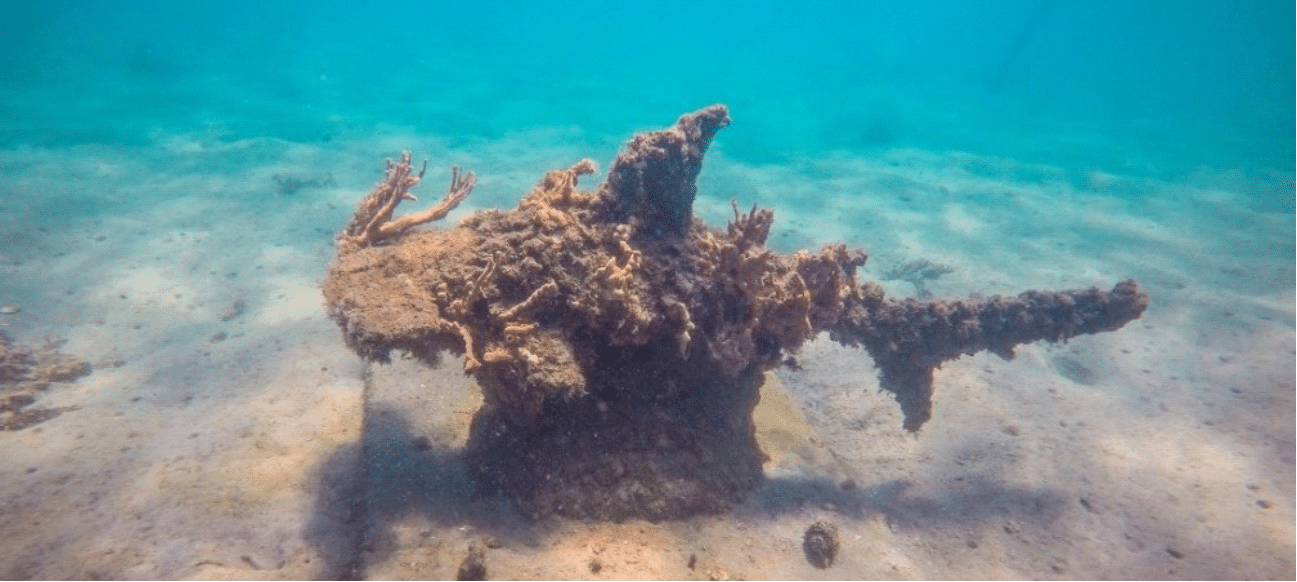The Underwater World of Marine Reefs in Palm Beach County

Just below the surface of the salty waters off Palm Beach County lies an abundance of reefs, areas of sand, rock, coral, and oysters, that play important roles for aquatic communities. These natural coral reefs, as well as an impressive collection of human-created features called artificial reefs, provide shelter, food, and protection for thousands of marine species.
About Coral & Artificial REefs
Click here to view a map of Palm Beach County’s artificial reef sites
Q. What are Coral Reefs?
Under ecosystems created by corals where fish, sea turtles, and other marine creatures live. Corals are animals that live on plankton and sunlight to grow and create reef structures. Coral reefs are created naturally and thrive in clear, warm, shallow salt water.
Q. What are Artificial Reefs?
Human-made habitats constructed from old ships, heavy gauge steel structures, concrete, prefabricated modules or limestone boulders. They are placed in areas away from natural reefs, creating new hard-bottom communities that serve as points of attachment for corals and sponges to grow. Once artificial reef materials are put in place, the natural process of the underwater environment enhances the structures and over time they function similar to a natural reef system. They take pressure off natural reefs by providing alternative recreational areas for scuba divers and anglers.
Benefits of Natural and Artificial Reefs
Environment
Natural and artificial reefs are some of the most diverse and valuable ecosystems on Earth. They support more species per unit of area than any other marine environment. Reefs also protect the coastline from destructive waves produced by storms. Building new artificial reefs expands the footprint of healthy marine habitat, enhancing biological productivity and increasing the population of fish and other aquatic species.
Economy
Researchers who examined the effects of artificial reef creation have found there are substantial economic benefits to local and regional communities. Benefits include spending by non-residents and visitors on fighting and diving activities associated with artificial reefs.
Recreation
Reefs are often destinations for snorkeling and SCUBA diving, as well as desirable locations for anglers to fish. Divers and anglers can choose to explore the reefs that lie close to shore, or discover some of the deeper habitats created by Palm Beach County Department of Environmental Resources Management’s artificial reef program. With so many sites to choose from, visitors come from all over to explore this fabulous underwater world.
Life Abounds on Artificial Reefs
Marine life of all shapes and sizes thrive in and around these human-made habitats. Corals and sponges canvas the reefs, often in bright colors, while other animals reside within crevices or frequent the surrounding waters. Small fish, such as sergeant majors and grunts, form large groupings, called schools, to defend against larger fish such as sharks and Goliath groupers.
Sea Turtle Cleaning Stations
Did you know that sea turtles not only hang out at reefs to rest, but they also use them as cleaning stations?
Porkfish, wrasse and other small fish search the shells and flippers for parasites to eat. This is a beneficial relationship for both animals, the fish get a full belly and the sea turtle gets a clean shell.
County and Community Partners Work Together
Palm Beach County’s artificial reef program was established in 1985. Since then, the county’s Department of Environmental Resources Management (ERM) has deployed over 55 vessels, 100,000 tons of concrete and 133,000 tons of limestone boulders to create an artificial reef system spanning from Tequesta to Boca Raton.
The Andrew “Red” Harris Foundation, created to honor the memory of a young man who loved diving and fishing in the ocean waters off northern Palm Beach County, works hand in hand with ERM to build and deploy artificial reefs. In its first four years, the foundation donated over 1,000 tons of limestone boulders and more than 600 four-ton artificial reef modules to the county’s artificial reef program for deployment off Juno Beach and Jupiter. Learn more at andrewredharrisfoundation.org.
Another type of artificial reef is Reef Arch, which is on display in our aquarium. This artificial reef is a modular and scalable structure designed for habitat restoration, coastal protection, and storm resilience. Its patent-pending honeycomb design slows down waves, which then safeguards mangroves, shorelines, and critical infrastructure. Reef Arch is constructed of CSA Concrete, a special concrete with a low PH that provides an ideal substrate for oysters, and other marine life. The Reef Arch in our tank is a scale model reef, however a full-size Reef Arch typically weighs 1,200 pounds and is more than 4 feet wide.
PBC Artificial Reef System highlights
North County Reef
Highlights Andrew “Red” Harris No Shoes Reef
Location: one mile offshore of Jupiter
Size: Five acres
Water Depth: 55 feet
Material: Cement structures, limestone boulders and a 16-foot-tall Jupiter Lighthouse replica
Jupiter Inlet Step Reef
Location: One-half mile off of the Jupiter Inlet
Size: One acre
Water Depth: 35-45 feet
Material: Limestone boulders and concrete material Details: Provides habitat for juvenile fish between inshore are and ocean
Central County Reef Highlights
Danny McCauley Memorial Reef
Location: One mile offshore of Singer Island
Size: 110 feet long
Water Depth: 80 feet
Material: Tug boat deployed in 2013
Details: Part of the Wreck Trek- a one-mile long dive spot
Ana Cecilia
Location: One mile offshore of Singer Island
Size: 170 feet long
Water Depth: 80 feet
Material: Supply ship deployed in 2016 Details: Part of the Wreck Trek- a one-mile long dice spot
South County Reef Highlights
Boca Raton Inlet Step Reef
Location: One mile northeast of the Boca Raton Inlet
Size: One acre
Water Depth: 30-40 feet
Material: Limestone boulders Details: Provides habitat for juvenile fish between inshore area and ocean
Sea Emperor Reef
Location: One mile southeast of the Boca Raton Inlet
Size: One-quarter acre
Water depth: 65 feet
Material: Hopper barge and concrete culverts

